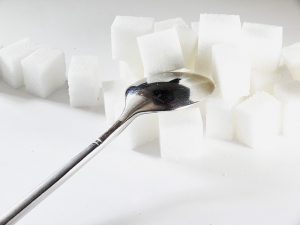Follow Us!
- Acupuncture & Herbal Answers1 Bartlett Court
Newport, RI 02840401-619-1912 -
- Sign up to receive news and updates and get my free report:“The Top 10 Reasons to Try Acupuncture”

-
-
Latest Articles:
- • The Best Ways to Protect Your Skin from the Sun This Summer •
- • Savoring Summer with Recipes Using the Best Summer Ingredients •
- • Top 5 Best Staycation Ideas for Summer •
- Monno patient hoursTue9:00 am - 5:00 pmWed9:00 am - 5:00 pmThu12:00 pm - 7:00 pmFrino patient hoursSatclosedSunclosed
Health
Summer Solstice
During  the summer solstice your yang energy reaches its peak. It is important to harness the peak of this yang energy, because as summer shifts into fall yang energy will decline. This great abundance of yang energy will translate throughout your body because during this season you are active and growing.
the summer solstice your yang energy reaches its peak. It is important to harness the peak of this yang energy, because as summer shifts into fall yang energy will decline. This great abundance of yang energy will translate throughout your body because during this season you are active and growing.
According to five element theory, during the summer the organ that receives extra energy is the heart. When the seasons change so do the organs we should focus on in the body. You should focus on the heart during summer. Feed the heart heart-nourishing foods and make sure to remain active so the heart receives positive energy. continue reading
Fighting Flu Season with Acupuncture
 While the flu is actually not a season, we have become programmed to think of it as the months of November through March. On average, the flu hospitalizes thousands every year, especially the young and elderly. There are also a number of deaths related to the flu, mostly due to people already having compromised immune systems.
While the flu is actually not a season, we have become programmed to think of it as the months of November through March. On average, the flu hospitalizes thousands every year, especially the young and elderly. There are also a number of deaths related to the flu, mostly due to people already having compromised immune systems.
The flu, also known as influenza, is a highly contagious respiratory infection that is caused by a number of viruses. To date, there are approximately 26 to 30 different known strains of the flu virus. This is one of the reasons the flu vaccine has only mild efficacy. The flu vaccine itself, typically only covers five to seven strains of the flu. Symptoms of the flu include fever, coughing, a sore throat, fatigue, muscle aches, pains, runny nose and watery eyes. continue reading
Nutrition for Heart Health OM Nutrition & Hypertension
 Oriental medicine (OM) nutrition combines ancient wisdom with modern science. OM nutrition is a holistic approach, which aims to balance all five flavors within most meals with one or two flavors being emphasized for therapeutic purposes. OM nutrition for a hypertension emphasizes bitter flavors, sour flavors and energetically-cooling foods.
Oriental medicine (OM) nutrition combines ancient wisdom with modern science. OM nutrition is a holistic approach, which aims to balance all five flavors within most meals with one or two flavors being emphasized for therapeutic purposes. OM nutrition for a hypertension emphasizes bitter flavors, sour flavors and energetically-cooling foods.
OM theory states the bitter flavor benefits the heart in moderation but an excess is harmful as it has a drying effect; for example, coffee is bitter. In moderation coffee acts as vasodilator increasing circulation but in excess it can raise blood pressure and has a diuretic effect. Modern scientific research has discovered while the human genome has 25 bitter taste receptors 12 of these are expressed in the human heart. continue reading
7 Ways to Communicate Healthy Habits to Your Kids

As the school year kicks back into gear so should the healthy habits that you and your children have before practiced. Notice how I said “practiced,” because we all know during the summer-vacation months we tend to indulge a little. Maybe you have had one too many backyard barbecues, or three too many trips to the favorite ice cream shop down the street. Whatever your summer vice may be don’t worry about it, you can regain those healthy habits from before and introduce them into your children’s lives! continue reading
6 Truths About the Not-so-sweet Side of Sugar
 A study published by the JAMA Internal Medicine found that more than 70 percent of Americans consume more than the recommended daily amount of sugar. Sadly, most of us are addicted to sugar, which happens to be hidden in most of the foods and drinks we consume. Added sugar can cause a whole array of problems that can be short term as well as long term. If you are experiencing health problems, lowering your sugar intake may be one of your best options. Below are 10 truths about the ugly side of sweets. continue reading
A study published by the JAMA Internal Medicine found that more than 70 percent of Americans consume more than the recommended daily amount of sugar. Sadly, most of us are addicted to sugar, which happens to be hidden in most of the foods and drinks we consume. Added sugar can cause a whole array of problems that can be short term as well as long term. If you are experiencing health problems, lowering your sugar intake may be one of your best options. Below are 10 truths about the ugly side of sweets. continue reading
How to make a natural sunscreen at home
 Although sun protection is extremely important to protect against harmful UV-rays and to prevent skin cancer, next time you pick out your sunscreen, consider what you’re buying. Many common sunscreens actually contain chemicals that can be harmful to your body.
Although sun protection is extremely important to protect against harmful UV-rays and to prevent skin cancer, next time you pick out your sunscreen, consider what you’re buying. Many common sunscreens actually contain chemicals that can be harmful to your body.
Chemicals to avoid in common sunscreens:
- Oxybenzone
- Retinol palmitate
- Methoxycinnamate
- Octinoxate
- Padimate O/PABA
- Nano or Micronized mineral particles
There are several and easy ways to make effective and natural homemade sunscreen. continue reading
6 daily habits to lower your risk of cancer
 Quit the tobacco, and don’t start if you haven’t already
Quit the tobacco, and don’t start if you haven’t already
It should be common sense now that smoking or chewing tobacco can lead to multiple types of cancer. If you are trying to quit, you are not alone. Try joining a support group or making a plan for yourself to set goals for quitting. Facing addiction is hard, but not using tobacco can save years of your life.
Healthy diet
A healthy, well-rounded diet can do wonders for lowering your risk of cancer and overall wellbeing. Cut out processed sugar and instead focus on whole foods such as fruits, vegetables and whole grains. Salmon is full of omega-3 fatty acids that have been shown to help fight cancer. Other fish that can help reduce the risk of endometrial cancer in women include halibut, sardines and tuna. continue reading
6 Alternative Treatments to Help with Arthritis
 Exercise
Exercise
For those with arthritis, exercise, no matter how little you do, is one of the best natural treatments. For those with severe arthritis, even the smallest amount of walking can make a difference. Swimming is one of the best forms of exercise for those with arthritis because it puts the least amount of impact on the joints. Strengthening exercises are also recommended to keep muscles and joints strong. continue reading
7 ways to make your loved one smile this Valentine’s Day
 Valentine’s Day is the perfect opportunity to show your loved ones how much you care. Below are some ideas to make this year’s holiday a memorable one.
Valentine’s Day is the perfect opportunity to show your loved ones how much you care. Below are some ideas to make this year’s holiday a memorable one.
Start the day off right
Make a homemade breakfast for your loved one or close family and friends in your life. Everyone can appreciate waking up to something homemade. Try doing breakfast in bed for your significant other or hosting a friends and family brunch at your house.
Show your appreciation
Don’t forget to tell your loved one how much you appreciate them. Show them how much they mean to you by making a creative list of all the reasons you are happy they are in your life. continue reading
5 natural ways to improve women’s health
 Egg health
Egg health
Getting pregnant can be frustrating when it isn’t happening as easily as planned. There are many reasons you could be dealing with a difficult pregnancy including egg health. There are many factors that play into egg health including blood circulation, stress and hormonal balance. For improving blood and oxygen flow, try to get some sort of exercise whether it is yoga, running or simply going on a brisk walk at least three times a week. Ask a massage therapist about abdominal massage, which can increase blood flow to the reproductive system. Stress can also play a very important factor in egg health. Find ways to de-stress with meditation practices, acupuncture and deep breathing. continue reading

